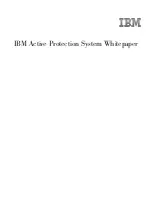
520
Chapter 24: Building a Search Interface
2
Save the file as collection_create_action.cfm in the myapps directory under the web root
directory
.
3
In the web browser, enter the following URL to display the form page:
http://127.0.0.1/myapps/collection_create_form.cfm
The following figure shows how the output appears:
1
Enter a collection name; for example, CodeColl.
2
Verify that Create is selected and submit the form.
3
(Optional) In the ColdFusion MX Administrator, reload the Verity Collections page.
The name and full path of the new collection appear in the list of Connected Verity Collections.
You successfully created a collection, named CodeColl, that currently has no data. For
information on indexing your collection using CFML, see
“Indexing a collection using the
cfindex tag” on page 520
.
Indexing a collection using the cfindex tag
You can index a collection in CFML using the
cfindex
tag, which eliminates the need to use the
ColdFusion MX Administrator. When using this tag, the following attributes correspond to
values entered in the ColdFusion MX Administrator:
•
collection
The name of the collection. If you are indexing an external collection (
external
= "Yes"
), you must also specify the fully qualified path for the collection.
•
action
(Optional) Can be update (the default action), delete, purge, or refresh.
•
extensions
(Optional) The delimited list of file extensions that ColdFusion uses to index
files if
type="Path".
•
key
(Optional) The path containing the files you are indexing if
type="path".
•
URLpath
(Optional) The URL path for files if
type="file"
and
type="path"
. When the
collection is searched with
cfsearch
, the pathname is automatically prefixed to filenames and
returned as the url attribute.
•
recurse
(Optional) Yes or No. Yes specifies, if
type = "Path"
, that directories below the
path specified in the
key
attribute are included in the indexing operation.
•
language
(Optional) The language of the collection. English is the default.
Summary of Contents for ColdFusion MX
Page 1: ...Developing ColdFusion MX Applications...
Page 22: ...22 Contents...
Page 38: ......
Page 52: ...52 Chapter 2 Elements of CFML...
Page 162: ......
Page 218: ...218 Chapter 10 Writing and Calling User Defined Functions...
Page 250: ...250 Chapter 11 Building and Using ColdFusion Components...
Page 264: ...264 Chapter 12 Building Custom CFXAPI Tags...
Page 266: ......
Page 314: ...314 Chapter 14 Handling Errors...
Page 344: ...344 Chapter 15 Using Persistent Data and Locking...
Page 349: ...About user security 349...
Page 357: ...Security scenarios 357...
Page 370: ...370 Chapter 16 Securing Applications...
Page 388: ...388 Chapter 17 Developing Globalized Applications...
Page 408: ...408 Chapter 18 Debugging and Troubleshooting Applications...
Page 410: ......
Page 426: ...426 Chapter 19 Introduction to Databases and SQL...
Page 476: ...476 Chapter 22 Using Query of Queries...
Page 534: ...534 Chapter 24 Building a Search Interface...
Page 556: ...556 Chapter 25 Using Verity Search Expressions...
Page 558: ......
Page 582: ...582 Chapter 26 Retrieving and Formatting Data...
Page 668: ......
Page 734: ...734 Chapter 32 Using Web Services...
Page 760: ...760 Chapter 33 Integrating J2EE and Java Elements in CFML Applications...
Page 786: ...786 Chapter 34 Integrating COM and CORBA Objects in CFML Applications...
Page 788: ......
















































